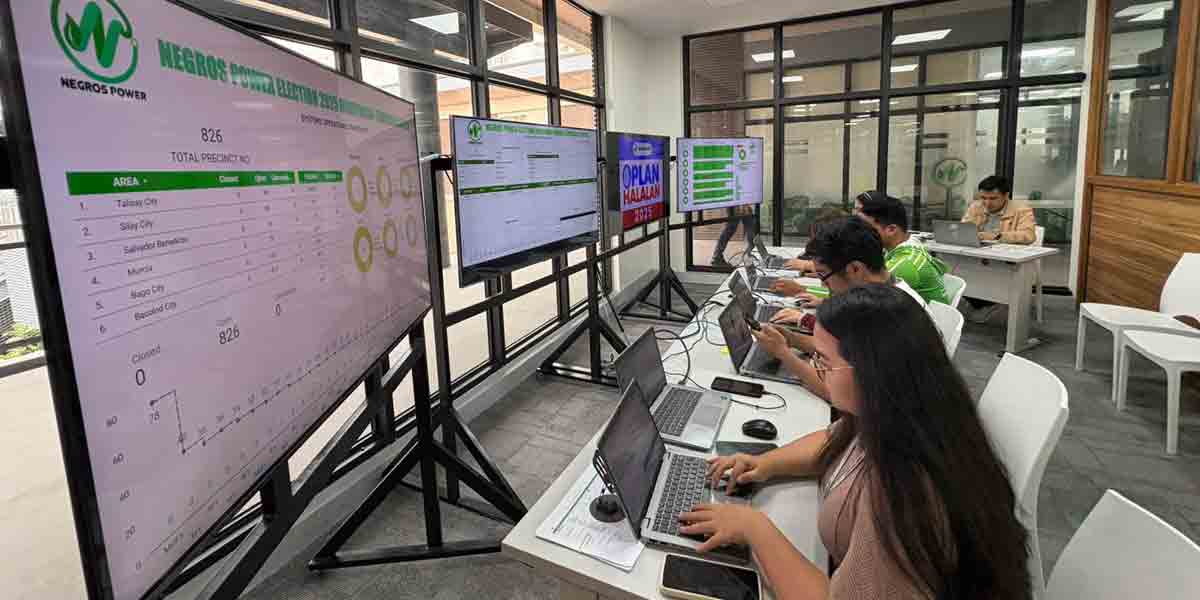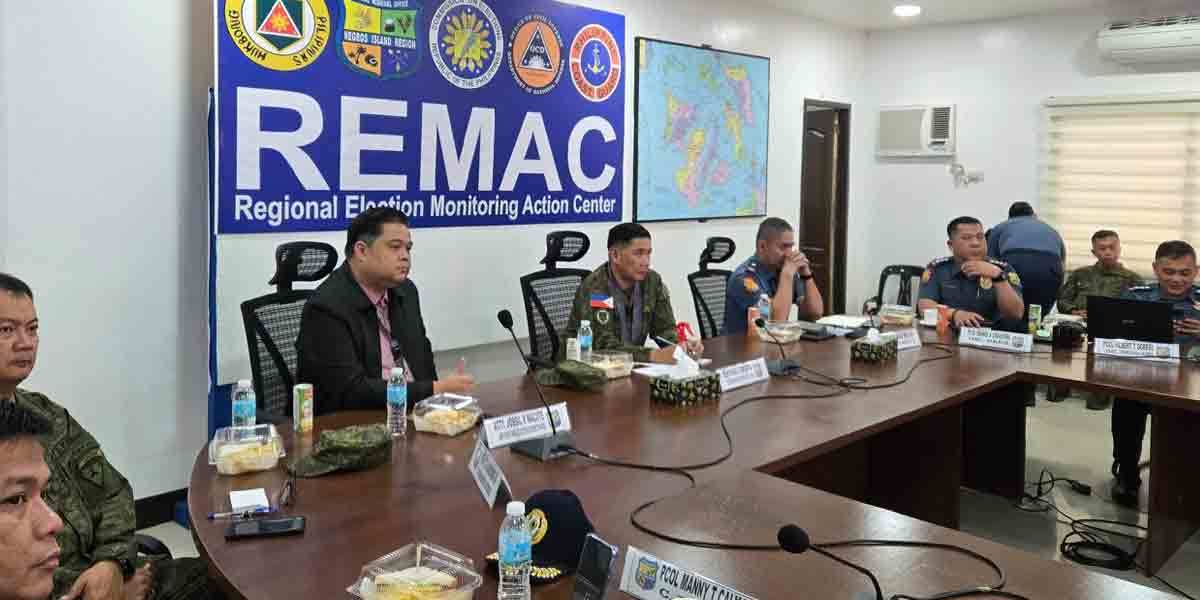
By Francis Allan L. Angelo and Joseph B.A. Marzan
Top leaders of Western Visayas agreed to maintain existing policies on physical distancing in public transportation and protocols on returning overseas Filipinos amid the COVID-19 pandemic.
This was the outcome of the online meeting of top officials of Negros Occidental, Capiz, Guimaras, Iloilo, and the cities of Bacolod and Iloilo Wednesday afternoon.
Governors Eugenio Jose Lacson of Negros Occidental, Esteban Evan Contreras II of Capiz, Samuel Gumarin of Guimaras and Iloilo City Mayor Jerry Treñas were present in the meeting.
Iloilo Gov. Arthur Defensor Sr. was represented by Provincial Administrator Suzette Mamon while Bacolod City Mayor Evelio Leonardia also tapped a representative.
Governors Florencio Miraflores of Aklan and Rhodora Cadiao of Antique were not present in the meeting.
City mayors and governors of the region met on Tuesday afternoon to discuss orders issued by the Land Transportation Franchising and Regulatory Board (LTFRB) and the Maritime Industry Authority (MARINA).
Treñas said they agreed on the following points in their response to the pandemic:
-continue our protocol on swabbing the returning OFWs and making them choose whether they go on home quarantine, facility quarantine or hotel quarantine at their expense up to the release of their swab results. We will request the IATF (Inter Agency Task Force on COVID-19) to respect our protocols;
-we are unanimous in pushing for the 1-meter physical distancing in public transport; and
-we are also unanimous in our request for the Department of Education to purchase laptops for teachers and students and improvement of internet facilities in the schools and the barangays.
The first point is in reaction to the decision of the policy that OFWs with negative RT-PCR results for COVID-19 from their point of origin will not anymore undergo another swab test and quarantine.
The second point pertains to the Department of Transportation (DOTr) memorandum gradually easing physical distancing rules in public transportation to accommodate more passengers.
The request to DepEd is relative to Treñas’ proposal to stop all school building projects in the meantime due to the suspension of face to face classes and use the funds for online education modalities.
The LTFRB’s Memorandum Circular 2020-047, approved by its board on Sept. 11, adjusted the minimum social distancing requirements in public land transport from 1 meter to 0.75 meters.
This would gradually be reduced to a minimum of 0.50 meters on Sept. 28, and then to 0.30 meters on Oct. 12.
MARINA’s Advisory No. 2020-069 issued on the same date also provided for reduced minimum distancing in passenger ships.
Starting on Sept. 14, passengers travelling between areas under General Community Quarantine (GCQ) can have minimum distance of 0.75 meters between them, or 75 percent maximum capacity on boats.
This will be followed by 0.50 meters minimum distance, or 80 percent maximum capacity, starting on Sept. 28, from GCQ to Modified GCQ (MGCQ) areas.
On Oct. 12, this will then be followed further by a reduced minimum distance of 0.30 meters, or 90 percent maximum capacity between two MGCQ areas.
These orders were both based on Resolution No. 69 of the national Inter-Agency Task Force (IATF) on the Management of Emerging Infectious Diseases.
The Resolution approved the recommendation of the national government’s Economic Development Cluster to “[a]dapt and continuously update the latest health standards and best practices, in consultation with health experts”.
The LTFRB and MARINA are attached agencies of the Department of Transportation, which first announced in Sept. 11 of these new physical distancing policies.
‘DANGEROUS, RIDICULOUS’
In an interview with Aksyon Radyo Iloilo, Treñas warned that the new distancing rules were “too dangerous” to implement in the city.
“My concern is that, I cannot understand the fact that we make sure that when our people are on the streets, they are not standing close to each other, even for more than 1 meter. We even have ordinances for that. I don’t understand why, when riding jeeps, people can only have 0.75 meters of distance, then 0.50, then 0.30. For me, our cases are rising and they do that. That for me is too dangerous,” the mayor said.
The mayor also said that Regulation Ordinance No. 2020-066, has the force and effect of law, and would be more binding than the orders by the agencies.
Regulation Ordinance No. 2020-066 mandates a physical distance of 1 meter between persons in all public areas and public transport.
“[A] local ordinance has the force and effect of law. Memorandum circulars are just memoranda for them. Unless it will be in the form of a law, for me it is only a memorandum. Ours is an ordinance that mandates the distance. We will continue to comply with the ordinance,” he said.
He went as far as to call the situation presented by the new edicts as “ridiculous”.
“You have a ridiculous situation where, if you are in a [public] transport, a jeepney, you can [have a distance of] up to 0.30 [meters], but when you go down, you will be cited when you don’t observe physical distancing. When you go down, the compliance officers will cite you for not following a social distance of 1 meter, because that is the ordinance and based on the health [protocols] that have been advised to us,” he said.
The mayor thinks that there hasn’t been any coordination between national government agencies themselves because of the confusion being caused by these protocols.
“In my view, what is happening here is that the right hand is doing something that the left hand doesn’t know. The departments probably didn’t meet about this because they must be busy with their own tasks that the cabinet hasn’t been meeting. So what happens is, one department does something which they think is good, then it gets approved and they just go ahead with it,” he said.
He also took a swipe at the Department of Health (DOH), which he said has not been strong enough in the fight against COVID-19.
The mayor had previously called for the resignation of DOH Secretary Francisco Duque III due to the latter’s unfavorable performance in responding to COVID-19 in the country.
“For me, if the [DOH] is the lead agency in the fight against COVID-19, and if other departments do not listen to the [DOH], then this is the thing that is going to happen. If our Secretary of Health is strong, then we will follow all the health protocols. Even from the start, the [DOH] would’ve been of great help. Unfortunately, we have a [DOH] that does not impose the requirements of the health protocols. So this is what is happening to us. Every department now deals with health,” the mayor said.
The mayor warned that further minimizing the distance between passengers on boats may lead to more COVID-19 cases in the city.
“If a positive [case] boards the jeep and they cough, when they contract the illness, will they be helped by those in Manila? Who will help you out here, the people in Manila who just make up their memoranda? Will they pay for your hospitalization? Just tell us. We are the only ones who are helping out our own people. What will happen to us here if our cases go even higher? Yesterday we had 63 new cases [in Iloilo City]. What do they want, increase our cases to equal that of Manila? Do they want us to join them? Do they want to give us problems?” He said.
‘DANGER TO TRANSPORT SECTOR’
Guimaras Governor Samuel Gumarin also told Aksyon Radyo Iloilo of his concerns regarding the orders, saying that the transportation sector may be the most hit.
Gumarin, who was also a medical doctor, warned that the LTFRB wasn’t being careful with its latest rules, citing the current COVID-19 situation in the country.
“Firstly, what the LTFRB wishes to implement is very difficult because it’s supposed to be directed from the decision of our health authorities. From what we’ve heard and read, the transmission is not only via droplets but also airborne. This means that if [there is a distance of] less than 1 meter, we cannot be confident that things are starting to calm down here in the Philippines, because it is really difficult to think about. We haven’t seen our curve flatten,” Gumarin said.
The governor warned further that if they pursue implementing the LTFRB’s memo, the transportation sector will be the hardest hit.
“If we pursue implementing [the LTFRB memo], it will endanger us. We have a 200,000 population here in Guimaras, and a good fraction of us here use public transportation. I am very aware that if we do this, the first to be exposed will be our transport sector, especially our sailors and drivers,” the governor said.
He said that while he recognizes that the transportation sector also drives the economy, there needs to be a conversation between the local and national governments and the transport sector on how they can fight COVID-19 together.
“Actually, some [operators] will still be thinking about it carefully like we are. But if they are thinking about their families and themselves, they should think twice before following the LTFRB. As governor and as a doctor, I think we can have a conversation and guide us on how to fight [COVID-19]. It would be a good lesson for our people, especially our transport sector, because our transport sector also powers the economy of the province,” he said.
STATUS QUO
MARINA Regional Director Jose Venancio Vero clarified to Daily Guardian via phone interview that their Advisory No. 2020-069 was not mandatory in nature.
He emphasized that their guidelines only provide for the minimum distance which operators should not lower further.
“Our guidelines are only stating the minimum, not to go below 0.75 [meters] starting on Sept. 14. When is starts between MGCQ and GCQ areas, [the minimum] should be [0.50 meters] on Sept. 12. Then, on Oct. 12, in MGCQ areas, like between Iloilo City and Guimaras, it will be 0.30 meters. They are also scared that if the passengers stick to each other, there may be transmission,” Vero said.
Vero said that operators of motorboats on routes between Iloilo City and Guimaras province will maintain the 1-meter distance in boats, which he said that the MARINA respects.
“We have already done 1-meter of distancing. The operators in Guimaras [boats] said they won’t change the 1-meter distance because they said only a few spaces will change,” he said.
He added that the MARINA would be open if local government heads wish to maintain mandating the 1-meter distance in motorboats.


















